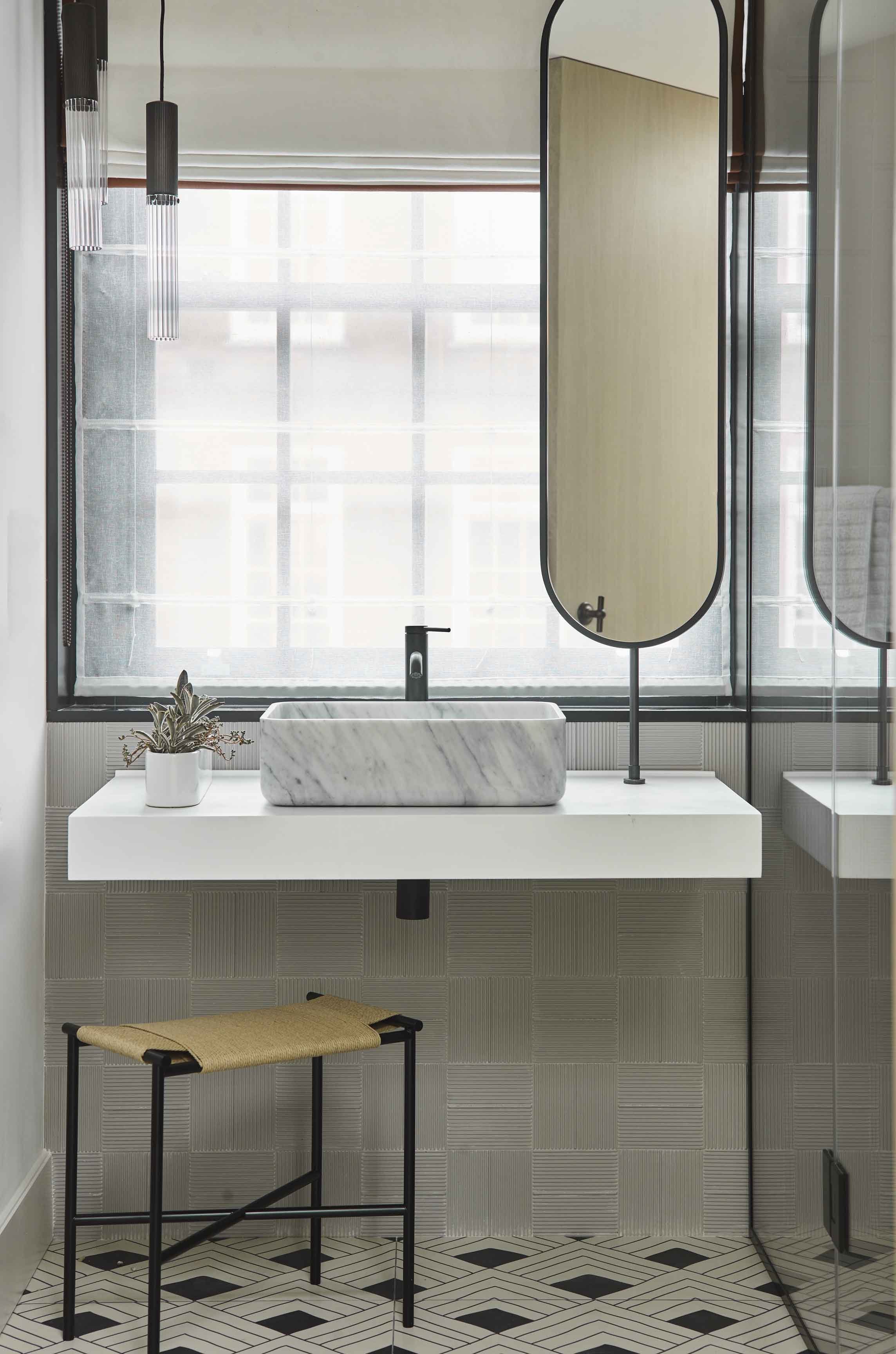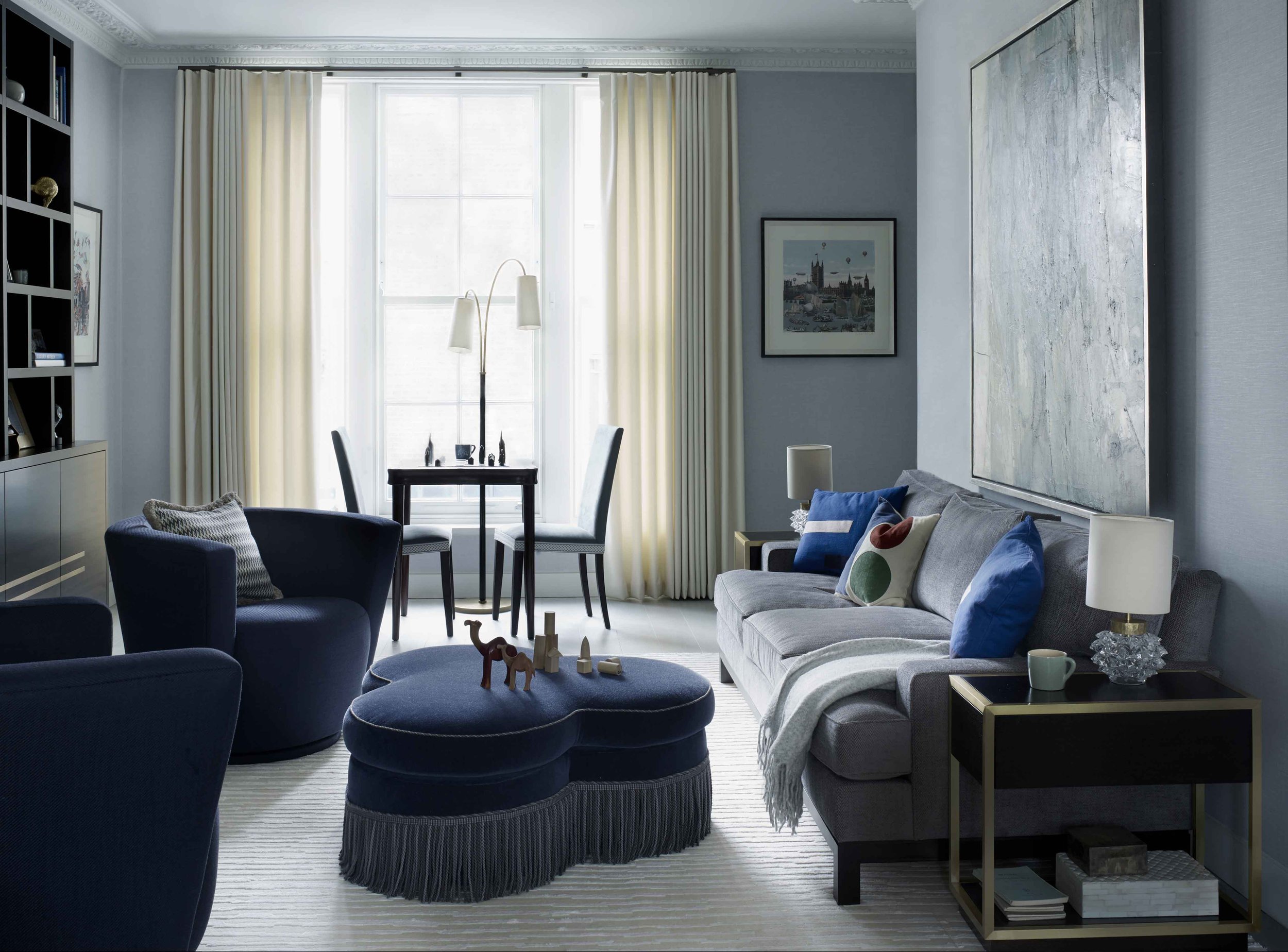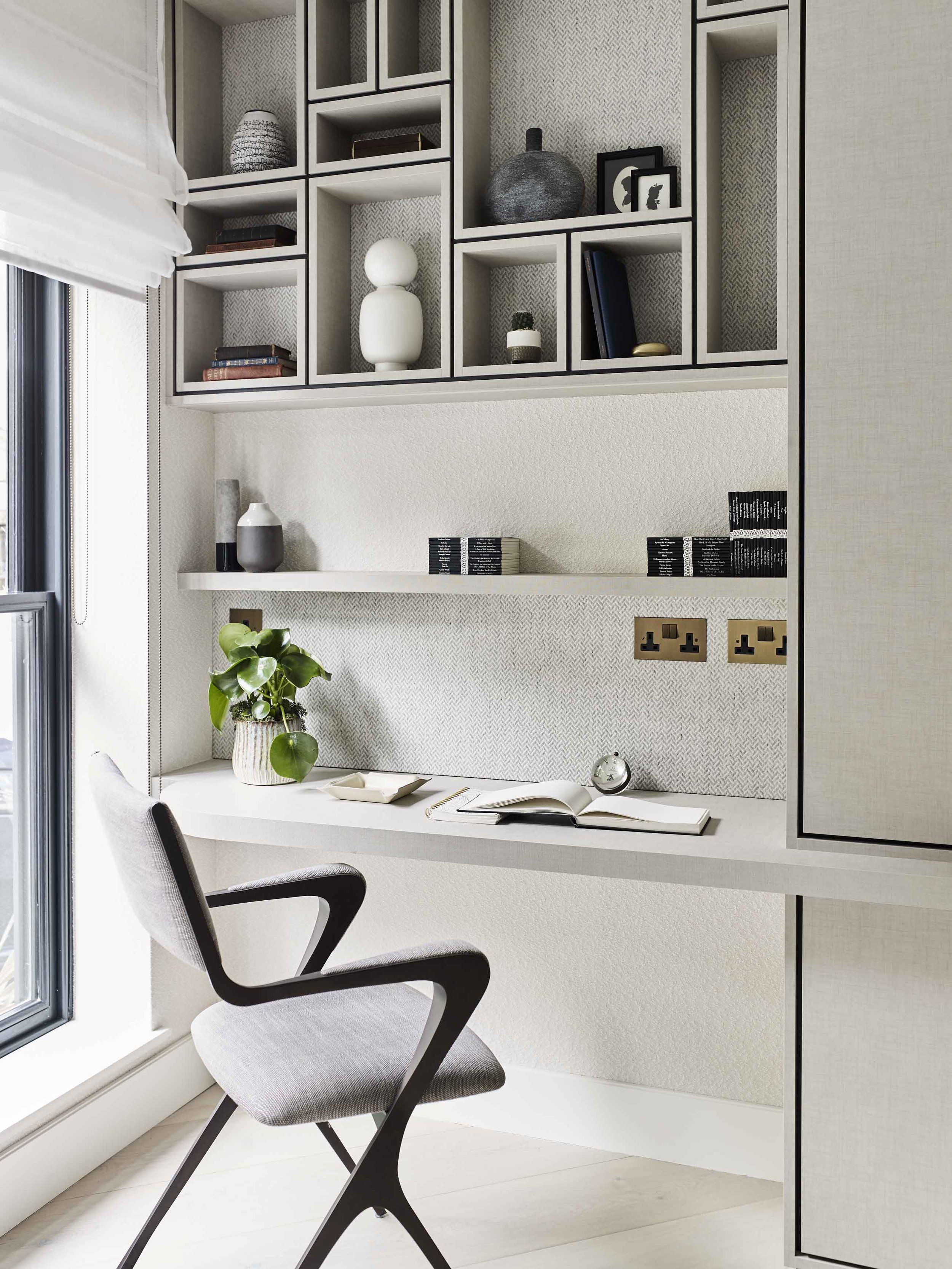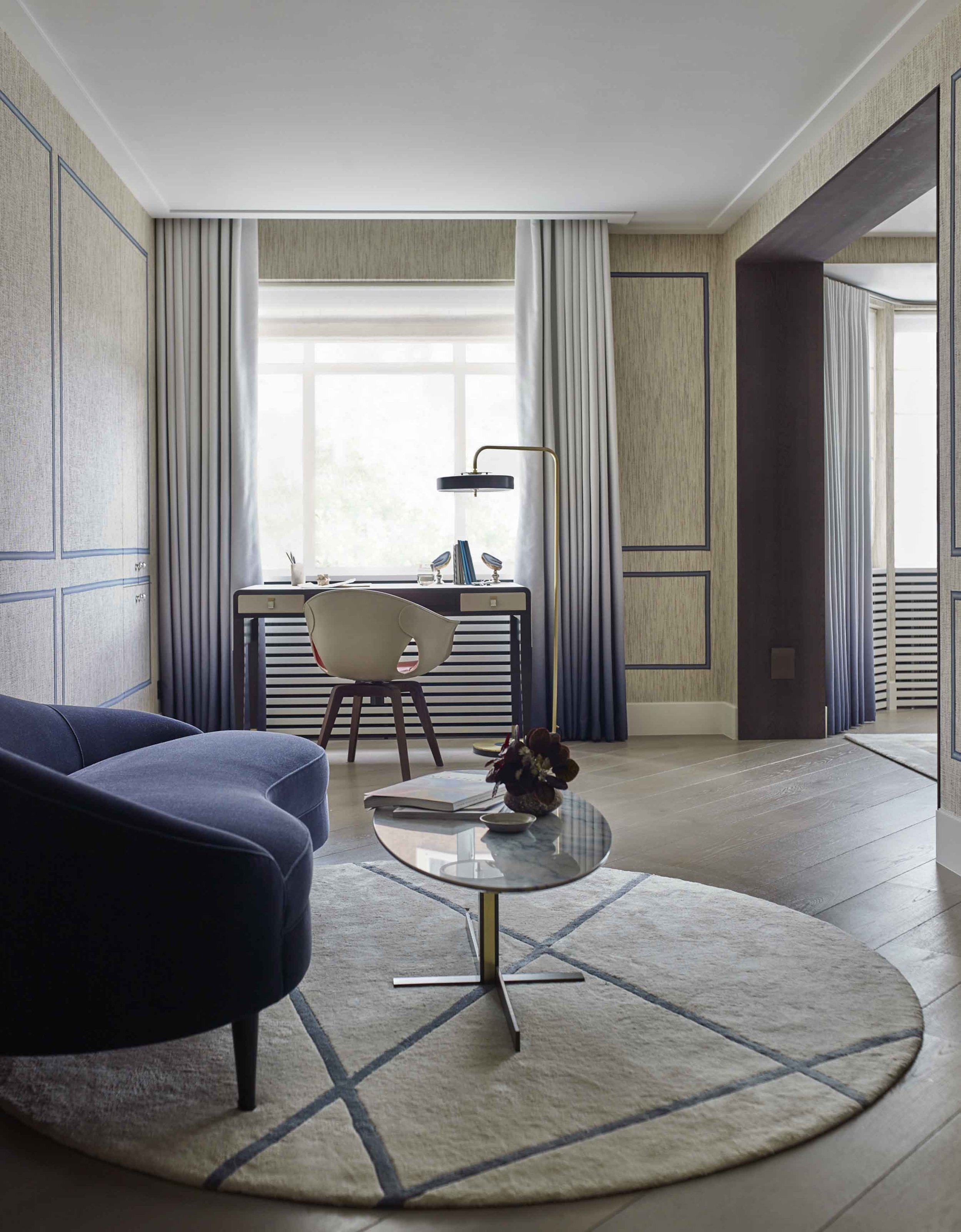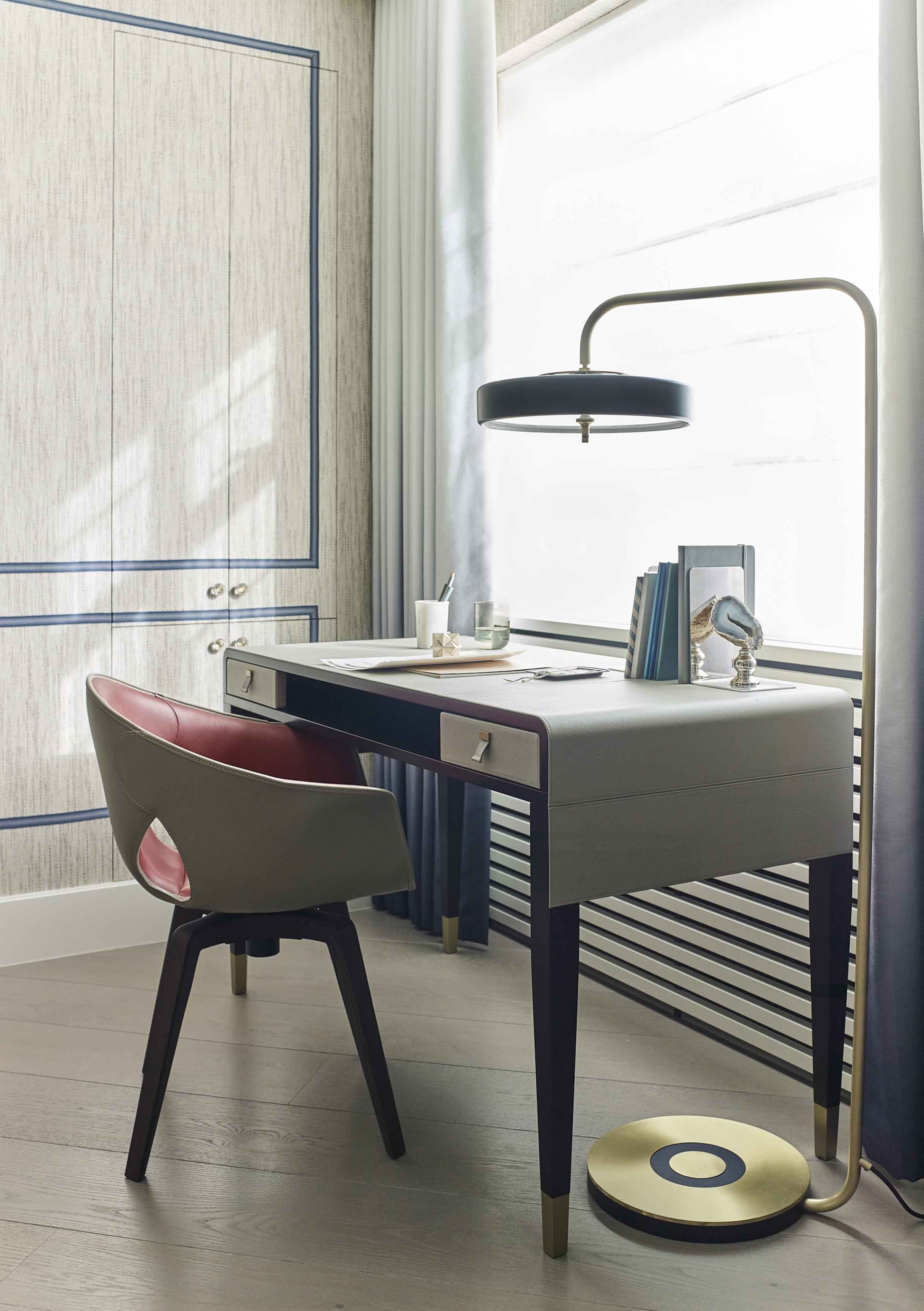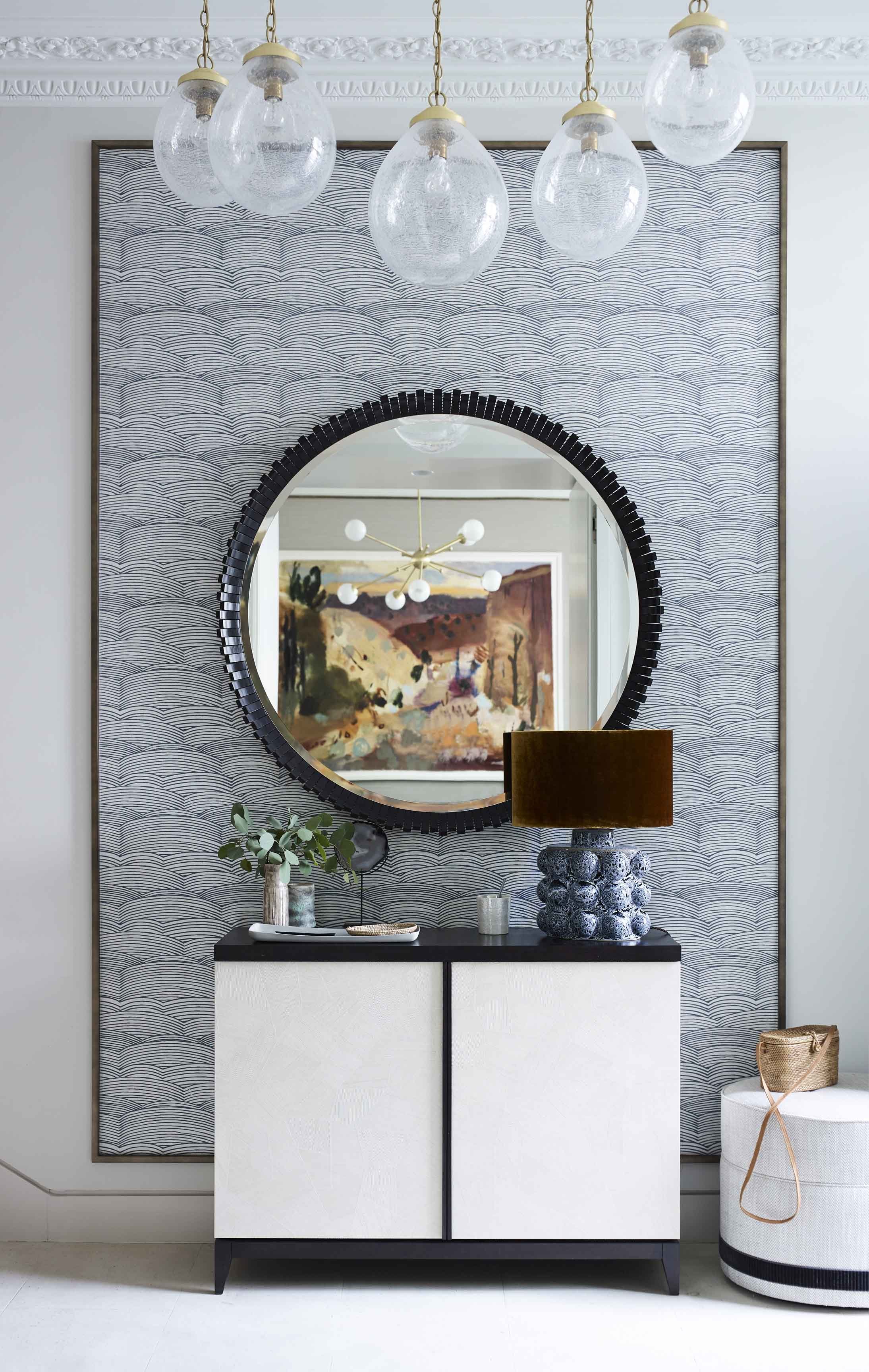5 ways to add character to a new-build home from Gunter & Co
New-build homes have a reputation for lacking character, thanks to their often plain walls and low ceilings. Fortunately, there are several design tricks you can employ to help bring personality to featureless rooms. But before you start installing paneling or changing the lighting, take a step back and look at the style of the windows. If your home has been built in a period style with windows to match, don’t be afraid to inject some classic features into the room. If it is the reverse, however, stick to contemporary touches.
Once you have chosen your overall look, you can add character with my five top tips.
Make the most of your windows
If you have featureless metal window frames – as so many new builds do – did you know that you’re not stuck with their dull colour? There are plenty of specialist companies who will spray paint the frames in situ. If you have skinny window frames, I recommend choosing a dark colour: my go-to is RAL7021. For chunky window frames, I suggest a soft grey like
RAL7044.
One clever trick I’ve employed on several occasions is to incorporate a dark reveal around the dark window frame. So, in the case of the modern Chelsea townhouse, rather than having just a dark sill with standard plastered reveal, we wrapped the windows in spray-painted MDF, which makes more of a deliberate statement.
Window treatments can also be used to play with a room’s scale, particularly if the ceiling height is less than generous. Therefore, hang full-height curtains from just below the ceiling as this will give the illusion of height. In terms of curtain length, it’s a big no-no to have a sizeable gap between the floor and the hem of the curtains – this look should stay firmly in the 1980s! If your interior is contemporary, curtains should sit just a couple of millimeters above the floor. In more traditional-style new builds you could have them pooling onto the floor, which gives a more dramatic look.
When you need privacy rather than complete black-out blinds, choose a sheer window treatment such as the one you can see in the office of the Chelsea modern townhouse. It will provide a gently filtered light and help soften both the windows and the overall space.
Change up the atmosphere with a new lighting scheme
I often find that new builds have a lot of recessed LED downlights all over the ceiling, which creates an effect redolent of an office rather than a home. A simple change to lightbulbs with a warmer hue will make an instant difference. Don’t be fooled by descriptions of ‘warm white’ on bulbs of 3,000K: look for 2,700K or even 2,500K to have perceptively warmer lights.
It's a more invasive solution – but so worth it in the long term – to employ an electrician to install additional lighting circuits to the ceiling lights. Having wall lights and lamps on different circuits will mean you have light emanating from several levels, which feels much softer and cosier than ceiling lights alone. And, by choosing interesting shades and detailed materials for your wall lights and lamps, you also bring texture and tactility to the space for further personality.
Another idea is to create a focal point with a feature pendant light. Change up the shade of an existing central light with a stunning design from the likes of Porta Romana if money is no object, or look at Heathfield & Co or Soho Home if you’re on a bit more of a budget. Buying a new pendant light or chandelier? Just be mindful that if it weighs more than a couple of kilos, you’ll need to reinforce the ceiling by adding a piece of plywood above the plasterboard into which you can screw the light. This is quite an undertaking, so always bear weight in mind when shopping.
Inject interest with architectural features
Contrary to expectations, a ceiling rose can work well in a contemporary new build, so long as it’s simple in style. It will bring welcome detail to a plain expanse of the ceiling, as will some step coving. This is relatively easy to apply, as it’s just a piece of MDF or plasterboard fixed to the ceiling. We installed coving in our Mayfair apartment project, where we also included a contemporary take on panelling. By applying a fabric braid to the walls, we gave the room a sense of scale and proportion.
Another effective way of creating the look of panelling is to coat lengths of MDF with liquid metal paint and then fit the mitred corners together to form a rectangular shape on the walls. We used this technique in our Kensington townhouse project and placed a striking wallpaper in the centre – the perfect backdrop for a feature mirror and contemporary sideboard below.
Elevate your walls above the ordinary
Painted walls are a pet hate of mine because they mark and scuff so easily – and most new builds start life with painted walls. To keep the look but ensure a better depth of colour and higher-quality finish, invest in premium paints such as those from Paint & Paper Library, Little Greene, or Farrow & Ball.
If you want to elevate your walls, wallpapering them is a good first step – but if you’re feeling more adventurous, you could consider fabric walls. It’s a significant investment but the results are stunning. Take a look at the work of The Textile Wall Company, with whom we’ve done quite a lot of work recently. This isn’t a look I’d recommend for a child’s room, but it will add real luxury to a master bedroom or guest room.
One note of caution: many contemporary properties have shadow gap skirting, which can cause wallpaper to peel as there’s nothing for it to finish onto. A simple solution is to fit a small trim above the shadow gap. This won’t be seen but will help anchor the wallpaper. An alternative is to apply panelling to the walls and overclad the shadow gap skirting as we did in the hall of our Chelsea modern townhouse. If you choose this option, you’ll also get the benefit of texture and warmth on your walls.
Don’t forget what lies underfoot
Hard flooring is common in new-build properties so my first step would always be to add rugs. They make the space cosier and more comfortable. Plus, they can also help with the acoustics of the space by absorbing sound. Just make sure your chosen rug is not too chunky as this will affect underfloor heating.
Select the largest rug you can so that most of the key furniture can be placed upon it with at least 10cm of rug visible around the edge of each piece of furniture. If you can’t find a rug that’s large enough, buy a big section of carpet and have the edges professionally bound. Just be sure the carpet ends at least 10cm from the walls or it could look like a failed fitted carpet!
If your new build has a poor-quality carpet instead of hard flooring, you can easily upgrade it. I like working with patterned carpets but they’re often not quite wide enough to cover the floor without adding a seam – which doesn’t look great. A good solution is to choose a complementary plain carpet, which is then fitted as a border to the patterned carpet and looks as though it was designed that way.



